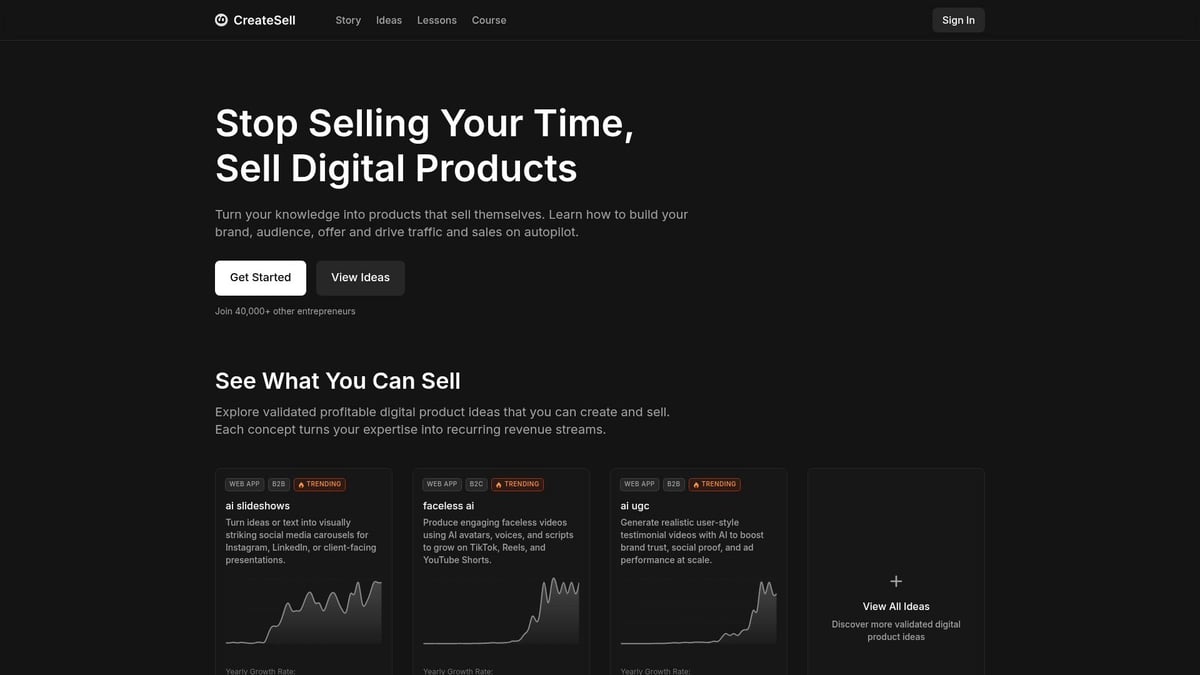Imagine having the power to choose when, how, and where you work—without ever asking for permission. In 2025, solopreneurship is more than just a buzzword; it is a revolution in how professionals design their lives for freedom, fulfillment, and lasting income. This guide will equip you with the mindsets, strategies, and actionable steps to carve your own solopreneurship journey in the digital age.
Are you tired of trading hours for a paycheck and navigating corporate politics? Discover how thousands are building impactful businesses as solo founders. Learn the proven frameworks to turn your expertise into a thriving venture, and follow this guide to map your solopreneur path for 2025 and beyond. We will explore mindset shifts, business models, digital product strategies, branding, audience growth, automation, and must-have tools.
The New Solopreneur Mindset: Freedom Over Permission
Imagine waking up and deciding exactly how your day unfolds. This is the promise of solopreneurship in 2025. The new solopreneur mindset is about choosing freedom over permission, designing your life and work on your terms, and breaking out of the old patterns that kept you waiting for approval.

Embracing Autonomy in 2025
Solopreneurship means more than financial independence. It is about reclaiming control over your time, your projects, and your future. As Justin Welsh famously put it, the true reward is “never asking permission again.” For many, the shift from employee to solopreneur involves trading the security of a steady paycheck for the deeper satisfaction of ownership and self-determination.
Leaving behind corporate conditioning can be challenging. Years of seeking approval often shape our habits and thinking. Solopreneurship invites you to unlearn these tendencies, replacing them with self-trust and proactive decision-making. This change opens doors to set your own schedule, choose your clients, and pick projects that spark genuine interest.
Real-world solopreneurs are choosing flexibility over higher pay, prioritizing work-life balance and meaningful projects. On platforms like LinkedIn, “permission-free living” is a frequent discussion. Recent data shows a growing trend: more professionals are leaving traditional jobs for solopreneurship, driven by the desire for autonomy and freedom.
Redefining Success as a One-Person Business
For today’s solopreneurs, success is no longer defined by revenue alone. The new model values fulfillment, personal growth, and impact. Many are choosing to work on projects they truly enjoy, building businesses around their passions rather than chasing the highest bidder.
Solopreneurship allows you to handpick your clients, collaborators, and creative direction. This power to shape your narrative—“Your life. Your story. Your rules.”—is at the heart of the solopreneur journey. Control, freedom, and independence are now the most valuable currencies.
Consider the designer who built a brand around sustainable travel, or the coach who turned personal values into a thriving digital product. These solopreneurs demonstrate that the long-term payoff comes when you align your business with your authentic self. Money follows those who prioritize freedom and deliver real value.
Here’s a quick comparison of what success looks like for traditional employees versus modern solopreneurs:
| Metric | Employee | Solopreneur |
|---|---|---|
| Revenue Focus | Primary | Secondary to fulfillment |
| Project Choice | Limited | Unlimited |
| Schedule Control | Minimal | Full |
| Personal Growth | Company-driven | Self-driven |
| Narrative Ownership | Shared | Complete |
Solopreneurship in 2025 is about building a life and business that fit your vision, not someone else’s expectations.
Overcoming Common Mindset Barriers
The path to solopreneurship is not without obstacles. Fear of instability and uncertainty can be daunting, but reframing risk as opportunity is essential. Instead of viewing change as a threat, see it as a gateway to growth.
Imposter syndrome and self-doubt are common hurdles. Practical strategies, like setting small, achievable goals and celebrating progress, help build confidence. Self-motivation and discipline are vital, but so is resilience—learning from early failures and setbacks strengthens your foundation.
Community and mentorship play a crucial role. Connecting with fellow solopreneurs and accessing resources like the growth mindset for solo founders blog post can provide encouragement and actionable advice. Many who made the leap from corporate roles share similar stories: initial uncertainty, followed by the empowerment that comes from owning every decision.
Solopreneurship rewards those who persist, adapt, and support each other. By adopting the right mindset, you turn challenges into stepping stones on your journey to autonomy.
Mapping Your Solopreneur Success Path: Step-by-Step Framework
Embarking on your solopreneurship journey in 2025 means designing a roadmap that matches your vision, skills, and lifestyle. Rather than following someone else’s blueprint, you build your own. This framework breaks down solopreneurship into actionable steps, helping you move from concept to confident execution.

Step 1: Clarify Your Vision and Values
Start your solopreneurship journey by defining what freedom and success mean for you. Are you seeking location independence, more time with family, or creative control? Write down your personal mission and the lifestyle you want to design.
Try this quick exercise: Imagine your ideal workday in 2025. What are you doing, who are you working with, and how do you feel? Prioritize these elements to guide your business decisions.
Look at solopreneurs who built ventures around travel, art, or flexible schedules. They aligned their work with personal values, which kept motivation high even when challenges arose. Your “why” will anchor you through every decision and transition in solopreneurship.
Step 2: Identify Your Strengths and Marketable Skills
Assess your expertise and passions. What do people consistently seek your advice on? Use self-assessment tools or feedback from peers to pinpoint unique skills.
Match these skills to current market demand. For instance, coaching, digital design, education, and content creation are among the top growth areas in solopreneurship for 2025. Research industry trends to see where your strengths fit best.
Examples include coaches leveraging years of corporate experience, designers creating niche templates, and educators launching online courses. Document your top three marketable skills and brainstorm how they could translate into valuable offers in the solopreneurship ecosystem.
Step 3: Choose a Profitable Business Model
Select a solopreneurship model that fits your lifestyle and goals. Common options include consulting, freelancing, digital products, coaching, and content creation. Each has distinct advantages.
| Model | Pros | Cons |
|---|---|---|
| Consulting | High rates, expertise | Time-bound, client reliant |
| Digital Products | Scalable, passive income | Upfront effort, marketing needed |
| Coaching | Personal impact | Limited by 1:1 capacity |
| Content Creation | Authority, community | Consistent output needed |
Digital products and automation are rising, letting solopreneurs move beyond trading time for money. For inspiration and actionable business model ideas, explore solopreneurship ideas for 2025. Consider how transitioning from hourly billing to scalable products could unlock more freedom in your solopreneurship plan.
Step 4: Validate Your Idea and Audience
Before building anything, validate your business concept. Use surveys, quick MVPs, or pre-sales to gauge real interest. Define your target audience by researching pain points, online communities, and related trends.
Leverage social platforms like LinkedIn to share your idea and collect feedback. This rapid validation helps you avoid investing in offers that do not resonate. Remember, solopreneurship thrives on listening and adapting to real audience needs.
Test, iterate, and refine your offer until you see clear demand. This step reduces risk and accelerates your solopreneurship success.
Step 5: Plan Your Escape Route and Transition
Map out your transition from employment to full-time solopreneurship. Create a realistic timeline and build a financial safety net to cover at least three to six months of expenses.
Start building your business as a side hustle. Set measurable milestones and key performance indicators to track progress. Learn from others who made the leap—many found that gradual transitions reduced stress and improved business sustainability.
Stay flexible and manage your expectations. Solopreneurship is rarely a straight line, but with preparation and persistence, you will navigate the shift with confidence.
Building a Digital Product Business for Solopreneurs
Digital products have revolutionized solopreneurship by making scalable, recurring income achievable for one-person businesses. In 2025, the ability to earn without trading more hours for money is a core reason many are choosing this path. Solopreneurs are leveraging online courses, templates, eBooks, memberships, and AI-powered tools to build revenue streams that run independent of their daily presence.
The digital product market is expected to keep growing, offering more opportunities for solopreneurship than ever. This shift allows individuals to focus on impact, flexibility, and creative work, rather than being tied to a traditional client-service cycle.
Steps to Launch Your First Digital Product
Launching a digital product as part of your solopreneurship journey starts with aligning your expertise and audience needs. Begin with ideation by identifying problems you can solve or knowledge you can package. Validate demand through pre-sales, surveys, or minimum viable products before investing significant effort.
Next, choose a user-friendly platform like Gumroad or Teachable for building and hosting your product. Focus on clear, compelling messaging and design a simple launch plan that builds anticipation and trust. Early sales can be generated via your network or audience, with feedback loops guiding improvements.
For a comprehensive breakdown of each stage, including real-world examples and tool recommendations, see Building digital products as a solopreneur. Pricing should reflect both the value provided and your long-term business goals.
How CreateSell Empowers Digital Product Solopreneurs
CreateSell is designed to help solopreneurs shift from time-based services to scalable digital products. The platform provides curated product ideas, actionable courses, and automation strategies tailored for solopreneurship. With a thriving community of over 40,000 creators, users gain access to support, feedback, and inspiration.

Key features include data-driven pathways to recurring revenue, resources for building a personal brand, and step-by-step guidance for every stage of digital product creation. Success stories from CreateSell users highlight how the platform accelerates growth and enables sustainable solopreneurship.
Automation and Scaling: Working Smarter, Not Harder
Automation is a cornerstone of modern solopreneurship. By setting up sales funnels, automating email marketing, and streamlining customer onboarding, solopreneurs can maximize efficiency and free up time for creative pursuits. AI tools now handle repetitive tasks like copywriting or customer support, making it easier to grow solo.
Building systems for consistent traffic and conversions is crucial for scaling digital product businesses. Platforms like Zapier, ConvertKit, and AI-driven analytics help maintain momentum with minimal manual oversight. Solopreneurs who embrace automation report higher satisfaction and more predictable income, proving that sustainable solopreneurship is within reach for those who leverage the right tools.
Branding, Authority, and Audience Growth for Solopreneurs
Building a powerful brand and growing your audience are the cornerstones of solopreneurship in 2025. Your personal brand is more than a logo, it is your story, reputation, and the promise you make to your audience. In a world where trust and relatability drive buying decisions, intentional branding and authority are essential to stand out and attract opportunities.

Crafting a Standout Personal Brand
Solopreneurship requires you to think of yourself as both the founder and the face of your business. Your personal brand is the foundation that supports trust, credibility, and lasting relationships. Start by clarifying your story, values, and what makes your journey unique. This narrative forms the backbone of your brand identity.
Consistency is crucial. Ensure your message, visuals, and values are aligned across your website, LinkedIn, X, and email campaigns. Consider this simple branding checklist:
- Define your mission and vision
- Identify your core audience and needs
- Craft a clear, memorable value proposition
- Choose a cohesive visual style
- Share personal insights and experiences
Successful solopreneurs like Justin Welsh have become authorities by sharing their authentic journeys and expertise. For deeper insight into how solopreneurship differs from traditional entrepreneurship and why personal branding is vital, explore this Solopreneur vs Entrepreneur differences guide.
A strong brand helps you attract aligned clients and projects, letting you shape your reputation on your own terms. This is the first step toward building authority in the solopreneurship landscape.
Building Attention and Authority Online
Establishing authority in solopreneurship means being visible and valuable where your audience spends time. Social platforms like LinkedIn, X, and Medium are powerful tools for building trust and showcasing your expertise. Create and share high-value content — whether articles, videos, podcasts, or newsletters — to educate, inspire, and connect with your followers.
Engage with industry communities, join relevant discussions, and offer thoughtful commentary. This not only boosts your visibility but positions you as a thought leader in your niche. Justin Welsh’s playbook, for example, emphasizes the power of consistency and authenticity in content creation.
Recent trends show that solopreneurs who publish regularly experience higher lead generation and conversion rates. For a broader perspective on how emerging trends are shaping solopreneurship, including the impact of AI and new platforms, check out these Solopreneurship trends in 2025.
Authority is built over time, through sustained effort and a willingness to share your expertise openly. The more you contribute, the more your audience will see you as a go-to resource in your field.
Growing and Nurturing Your Audience
Effective solopreneurship hinges on cultivating an engaged, loyal audience. Start by clearly defining your ideal audience, then tailor your content and offers to their needs and aspirations. Building an email list remains a top strategy, allowing you to nurture relationships and provide ongoing value.
Prioritize regular communication and respond to feedback to foster trust. Offer exclusive tips, resources, or behind-the-scenes insights to reward your most engaged followers. Tools like ConvertKit and analytics platforms help you measure engagement and refine your approach.
Solopreneurs who put their audience first often see organic growth through referrals and word-of-mouth. This creates a cycle of trust and value that sustains your solopreneurship journey for the long term.
Essential Tools, Systems, and Habits for Sustainable Solopreneurship
Navigating solopreneurship in 2025 means leveraging the right mix of tools, systems, and personal habits. With technology evolving rapidly, the modern solopreneur has access to resources that streamline workflows, automate repetitive tasks, and support sustainable growth. Let us explore the essentials for building a resilient and efficient solo business.
Must-Have Tools for 2025 Solopreneurs
Selecting the right tools is foundational for effective solopreneurship. Project management platforms like Notion, Trello, and Asana enable seamless organization of tasks, deadlines, and client communications. For digital product businesses, platforms such as Gumroad, Teachable, and Podia simplify the process of selling courses, templates, or memberships.
Automation tools are crucial for scaling. Zapier connects apps and automates workflows, while ConvertKit streamlines email marketing. Modern AI copywriting assistants help solopreneurs produce content and save time. Financial management cannot be overlooked. Solutions like QuickBooks, Wave, and Stripe help track income, expenses, and taxes, ensuring your business finances remain healthy. For more in-depth financial strategies, see these solopreneur financial management tips.
Here is a quick comparison of popular tools:
| Function | Top Tools (2025) |
|---|---|
| Project Management | Notion, Trello, Asana |
| Digital Products | Gumroad, Teachable, Podia |
| Automation | Zapier, ConvertKit |
| Financial | QuickBooks, Wave, Stripe |
Adopting a tailored tech stack is vital for efficient solopreneurship. The right combination supports your workflow, improves productivity, and helps you focus on what matters most.
Systems and Processes for Efficiency
Building efficient systems is key to sustainable solopreneurship. Time-blocking and batching tasks allow you to work deeply without distraction. Creating standard operating procedures (SOPs) for repeatable processes saves time and reduces errors.
Consider delegating or outsourcing specialized tasks, even as a solo founder. This frees capacity for high-impact work. Weekly routines, such as reviewing your goals every Monday and batching content creation on Fridays, foster consistency.
For practical time-saving methods, explore time-saving trends for solopreneurs that highlight asynchronous communication and smart task management.
Tracking progress with digital dashboards and regular performance reviews ensures your solopreneurship efforts stay on course. Efficient systems empower you to adapt quickly and scale your business without burnout.
Building Habits for Longevity and Wellbeing
Sustaining solopreneurship long-term requires intentional habits. Setting boundaries is crucial to prevent burnout—define your work hours and stick to them. Prioritize continuous learning by dedicating time each week to upskill or explore new trends.
Networking and peer accountability provide encouragement and fresh perspectives. Joining mastermind groups or online communities helps combat isolation. Balance is essential: schedule periods for rest, exercise, and personal growth alongside business tasks.
The most successful solopreneurs prioritize resilience. They view setbacks as opportunities for growth, adapt their routines as needed, and maintain a strong sense of purpose. By cultivating these habits, solopreneurship becomes not just a way to earn income, but a sustainable and fulfilling lifestyle.
Now that you’ve explored the mindsets, strategies, and practical steps for designing your own solopreneur journey in 2025, the next move is yours. If you’re ready to stop trading your time for money and want to turn your expertise into a self-sustaining digital product business, I encourage you to take action today. The path to freedom and fulfillment starts with one decision—choosing to build something of your own. Let’s put these insights into practice and start mapping your unique success story together.
Get Started